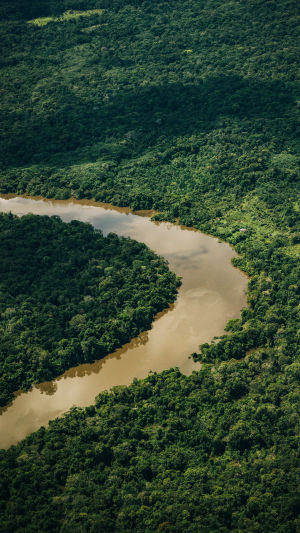The Amazon River is one of the most fascinating natural wonders in the world. Located in South America, it is the second-longest river in the world, stretching approximately 6,400 kilometers from its source to its estuary.
While it may not be the longest, it boasts some impressive statistics that make it unique among the world's great rivers.
Firstly, the Amazon River basin covers an area of approximately 6.9 million square kilometers, which is almost twice the size of the Congo River basin, which is ranked second in terms of size.
In addition, the Amazon River has an impressive runoff of 220,000 cubic meters per second, which is five times that of the second-ranked Congo River. The Amazon River is also home to nearly 15,000 tributaries, which is more than any other river in the world.
The Amazon River runs through the Amazon Rainforest, one of the most biodiverse regions on the planet. The river is home to countless aquatic species and plays an essential role in sustaining life in the rainforest. However, despite its importance, there is not a single bridge over the Amazon River.
This is surprising considering that almost 30 million people live in the region that the river flows through. Most of these people live in small towns and villages along the banks of some of the river's tributaries.
While there is a need for transportation infrastructure, there is not much demand for bridges. This is because small boats and ferries are more practical and efficient for travel and cargo transportation in these areas.
Another reason why there are no bridges over the Amazon River is the unsuitable soil for construction. The river passes through a vast area of tropical rainforest, which receives large amounts of rainfall throughout the year.
This creates a wide swamp on both sides of the river, and the soil is very soft. Building large-scale bridges in such conditions is challenging, as it requires deep foundations and long approach bridges. The construction cost is also high, making it economically unfeasible.
Despite the absence of bridges, the Amazon River continues to play a vital role in the lives of those who live along its banks. It serves as a source of transportation, food, and water, among other things. The Amazon Rainforest also provides numerous benefits to the world, including oxygen production, carbon sequestration, and biodiversity preservation.
The Amazon River may not have a single bridge, but it remains a remarkable natural wonder that serves as a lifeline for millions of people and countless species. Its unique characteristics make it stand out among the world's great rivers, and its importance cannot be overstated.





